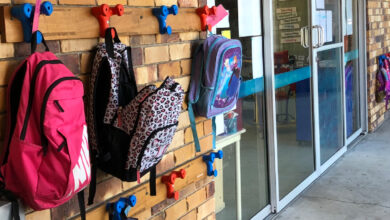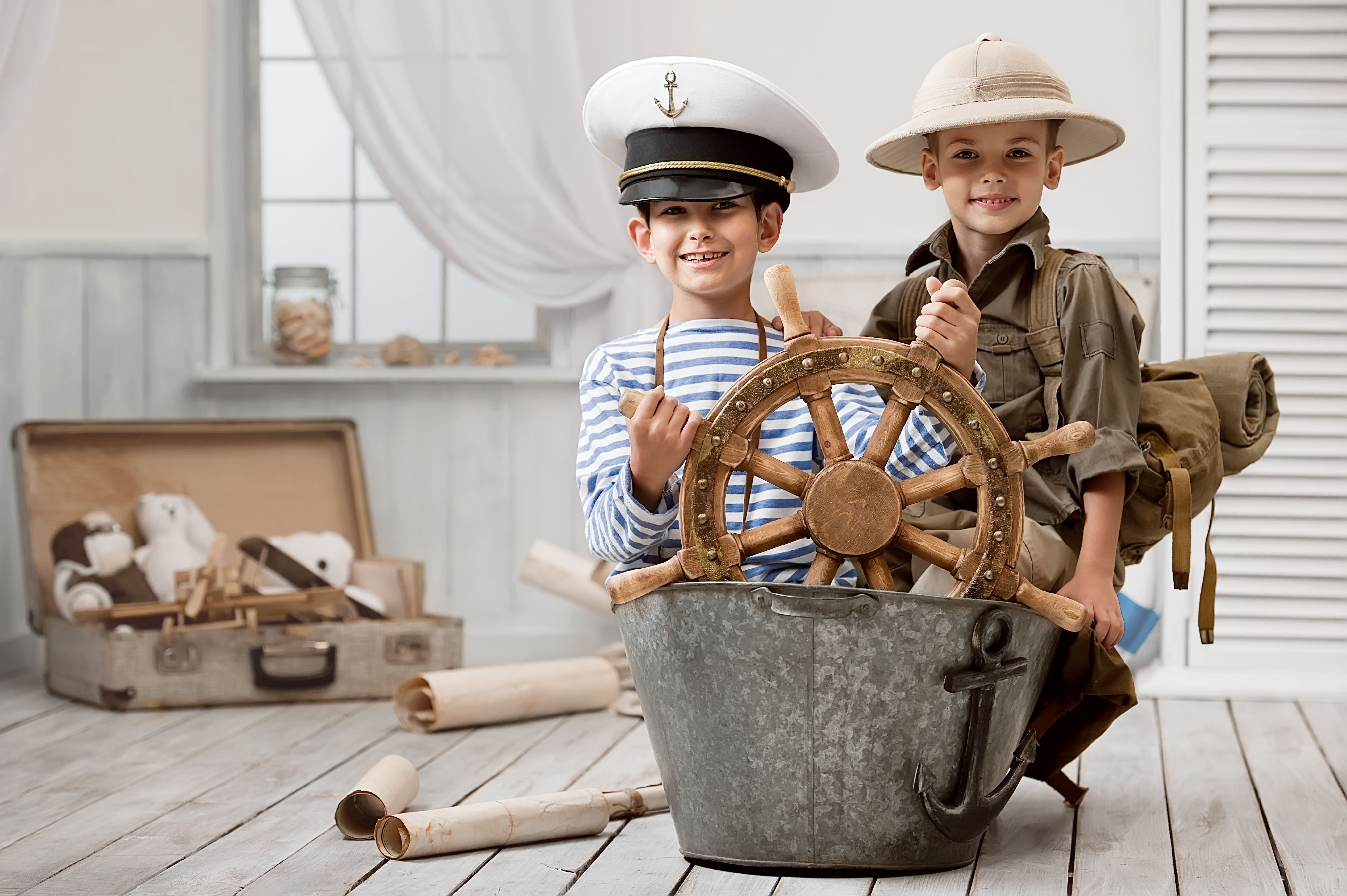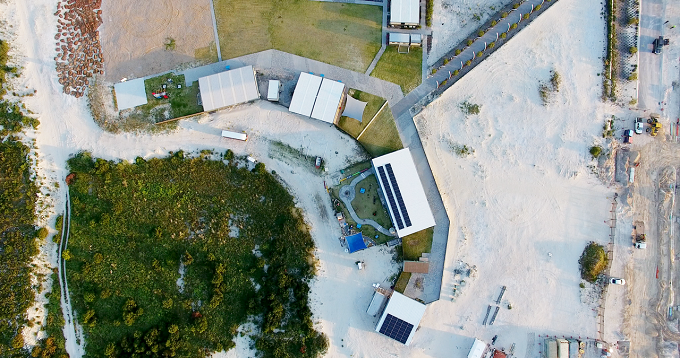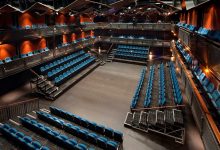Designing a nature play space for school

Anyone who has watched a toddler open a present, toss it aside, then play with the box, knows that simple things are enough to engage a child’s imagination, but does this extend to the school playground?
This article originally appeared in this term’s issue of School News. Did you see it?
Dr Elizabeth K Nesbit of Trent University in Canada has been researching the effects of ‘nature connectedness’ and has found that, just like the Japanese custom of ‘forest bathing’, wellbeing can be improved through the freedom to whimsically connect with nature.
Much of a child’s school day is teacher-directed, and break times are their chance to imaginatively create activities and explore – guided by what they can see, touch, hear and smell. Could it be that the more high-tech the playground, the less satisfying the play? We spoke with some industry experts on the benefits of nature play, creating the space, and risks and benefits.

Industry views
George Davidson of GDL Nature Play Spaces…
… in Queensland says nature play is about the use of natural materials, but also design:
“A nature play space is about ‘open ended play; the result should be an unstructured space that encourages children to make their own way through the equipment.” He says, while features can offer possible uses, nature play equipment does not “dictate” the function of any given piece. It is also about stimulating the senses in ways modern life has forgotten.
“It’s the difference between a wooden platform in a shape that hints at being a boat, versus a fully-fledged ‘boat’, which couldn’t be anything else.” He says, once you’ve played with it as a boat, “there’s nowhere else to go, but with a simple platform, today a boat tomorrow a fort”.

He says nature play should include loose materials for children to create their own fantasy play, such as sticks to create shelters, loose stones for dams or bark for boats. It could also include and other items we find in nature, like gumnuts for counting or leaves as money. “It’s also great to add sound into an area as this can help to soothe children.”
So, what’s the benefit of a purpose-built ‘nature play’ space over playing in the forest?
“Both are important, but the reality is, it’s a more controlled environment,” Mr Davidson replied, explaining that, with health and safety requirements, the space can be designed with “managed” and “controlled” risks, as opposed to the wild cards school staff can’t control or predict.
It’s these risks that underpin the main benefit of nature play, according to Mr Davidson. “It gives them back the confidence we had as kids; plus the chance to problem solve, learn things themselves, push themselves out of their comfort zone.”
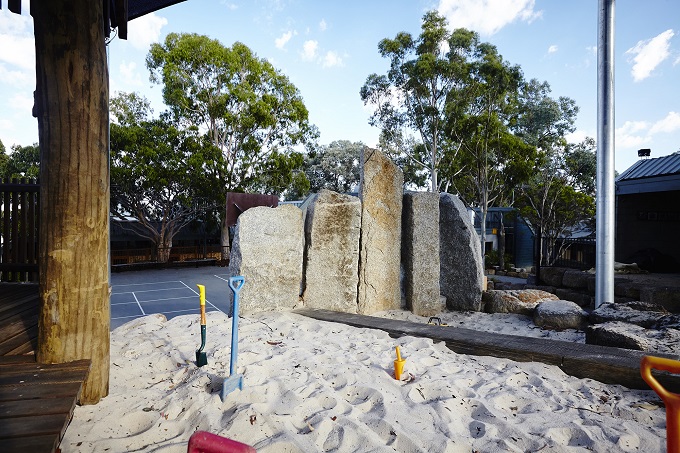
He says it’s a chance for children to develop self-esteem, as they overcome challenges in a safe environment against the backdrop of a society that has become “all too much against taking risks”.
He says that while safety standards are necessarily stringent, they can be worked with to achieve great results: “For example, to avoid the requirement of synthetic soft fall surfaces, we can just work below the minimum heights for the natural surface options. You can create a challenging feature without taking it too far.” He says it’s all about how much risk you are prepared to give the children, along with fulfilling your obligations as a school.

Planning is important for engaging children: “I try to design areas, so they flow. I will have little sections where different things happen, but then link them together with stepping stones or a path.”
“I like to hide little things that aren’t immediately apparent, for them to find; I add little cubby areas that they can relax in. It’s no good putting all the fun parts in one place!”
“The planning process starts with a site visit to see if there are already some key elements to use as a backbone to create a play space; trees, mounds or open spaces. From here a list of needs and wishes are put together and from this a concept plan can be drawn. It’s not all about the wow factor but that they flow.”
“The real creativity starts with the arrival of the raw materials on site. Although there are plans in place we work also with the materials we can source. Using natural materials means not all pieces are identical and it cannot be 100 percent planned how the space will evolve. This generally happens after the first few stone are laid and the key items are in place. From then on, the rest will fall into place.”

Mary Jeavons of Jeavons Landscape Architects…
… in Victoria says a nature play space comprises predominantly natural materials; is inherently open-ended; includes loose materials; facilitates the development of skills in children and is ideally backed by an education program.
She listed three essential themes of nature play: “The first is the concept of ‘looseness’, which invites true engagement; children building, constructing, arranging objects creatively (and often socially). The second is that materials are not perfectly smooth, purpose-designed, evenly spaced or predictable and are completely open-ended in how they may be used. Thirdly, the setting provides some living elements, most likely vegetation that will attract birds, insects and wildlife, exposing children to the local environment, seasonal change and natural processes.”
“Sensory gardens and therapeutic or respite spaces have become important in recent years, and these make a vital contribution to children’s well-being at school.”
She said, “many schools in Victoria also recognise the importance of children building their own cubbies and role play spaces, and either provide loose branches for this purpose, or allow their use. These are frequently carefully managed, with rules about containing the loose materials and making sure that play with sticks does not cause injury”.
Ms Jeavons says there is considerable evidence indicates that interaction with nature is vital for all humans, not only children, however, she said, “natural elements, especially plants, provide a calming respite for children undergoing sensory overload”.
However, Ms Jeavons said, “nature play zones do require special considerations in schools” and “should be located where through-traffic, running (and especially ball) games will disturb the play”.
“Loose sand, leaves, pebbles etc. need to be well contained and should not be allowed to drift across paths or courts or into buildings and plant materials are fragile and will not survive unless they are carefully protected from trampling when young,” she cautioned.
She says the Australian Standards for Playground Surfaces and Equipment (the AS4685 suite) should be consulted: “Falls from heights more than 600mm need to be managed, and the surfaces designed to attenuate impact. Mild roughness and splinters are considered acceptable, unless they are sharp protrusions that can injure a child.”
“The recently published AS4685-Part 0 2017 explicitly states the value of nature play and the need for children to experience non-standard, natural settings for their play.”
Ms Jeavons says children will play with anything that is not “out of bounds”, so schools should pay attention to auxiliary features in school grounds: “For example, when selecting tree species for a school, consider whether they might provide useful flowers or seedpods for play, branches for climbing, and useful shade, while withstanding heavy use and compaction around their roots.”
Arun Kosh of Surfacing Contractors, Australia…
… says a natural play environment can be created anywhere, but surfacing has become important, due to a culture of risk-aversion and a prohibitive concern about “kids getting dirty”.
He said, “the nature play design movement came out of Europe years ago, and has taken hold in WA more than anywhere”. The spaces facilitate “freeform play with nothing scripted” – a space where play items trigger the imagination.
According to Mr Kosh, the key to engaging children is to randomise the play. He says Frew Park at Milton Tennis Centre is probably the least ‘sanitised’ play space in Queensland: “It’s the most tricky, risky, and therefore, the busiest park in Brisbane. There, children can challenge themselves – there’s nothing unsafe, everything is built to standards, but they’ve created a space that’s challenging, interesting and engaging. Frew Park is not a nature-based playground, but it’s a good example of how kids can be challenged and remain safe. Nature play can be safe and compliant.”
So, which are the best surfaces for a nature play space? The solution, according to Mr Kosh, is usually a combination of surfaces. By using rubber in high fall zones, and loose surfaces elsewhere, you can have extra safety measures where you need them, without sacrificing the natural themes.
“You see a lot of decomposed granite, which is a nice natural material, but you get transference; it can become loose underfoot, or it can become contaminated.” He says climate will be a factor: wind levels, humidity and heat will affect how a surface behaves.
It’s also important to look ahead to the future use of the space: “Will you want to put A-frames on the surface? If so, you need to think about impact. Do you need accessibility facilities to cater for children with diverse needs?”
He says impact absorbing safety surfaces can be adapted for nature play “in a way that does not have to jar against the natural intent of the space”.
“In some cases, due to excessive shade for example, synthetic grass is more suitable than trying to maintain lawn without sunshine,” he noted.
“Rubber can be reserved for high-wear areas, such as at the bottom of the slide or under the swings – and it can be coloured to match organic soft fall surface.”
“Living soft fall (real grass) can be installed over the top of a specialised impact layer for aesthetics, without compromising your impact attenuation,” he explained.
He suggests being a bit brave about small manageable risks: “Take planter boxes – why are they always tucked away in a corner? Why not centrally located where everyone can engage in them? Think of the possibilities: flowers to smell; to understand that carrots come out of the ground, not a bag; an array of stones, boulders and water; height-varied sandstone boulders, to sit, to run along.”
He cautioned that when nature play becomes “a set of ‘tick the boxes’ designs” something is lost. ‘A dry creek bed, a plant, and a fallen log does not a nature play space make…! He said, “there’s nothing wrong with these elements, but they can be incorporated in much better ways”.
However, Mr Kosh is hopeful. He sees the growth in nature play as a rejection of the sanitisation of childhood and “the hysteria around kids and dirt and risk”, and a push towards “kids reengaged with their surroundings”.

